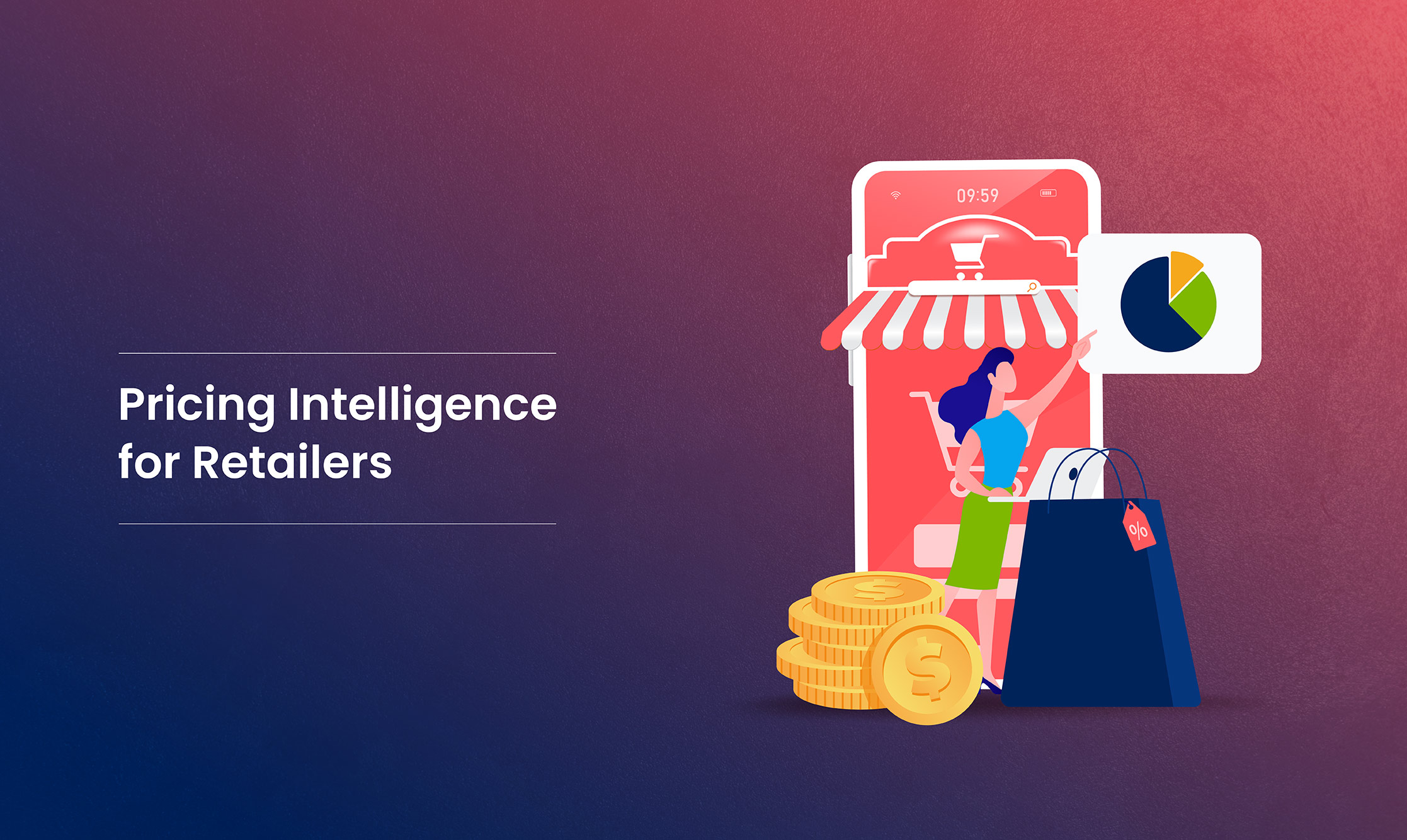Understanding Pricing Intelligence
In today’s tough retail world, knowing the right prices is crucial. This guide will help retailers understand pricing better, along with practical tips to boost profits and stay ahead. Retailers can adjust prices smartly, meet what customers want, and beat rivals by using pricing info. Understanding what shoppers like and market trends helps set prices right, making more money while keeping customers happy. Pricing smarts aren’t just helpful in this competitive market—they’re vital for surviving and thriving in retail.
Importance of Pricing Intelligence in Retail
Pricing knowledge is vital in retail and guiding decisions along with profits. Retailers adjust to competition and market changes with data insights. It helps grasp consumer behavior, competitor prices, and trends to set the best prices. Retailers use it to tailor strategies for goals like growing market share or keeping customers loyal. In today’s fast-changing retail world, it is crucial to stand out.
Common Challenges
Overcoming challenges is crucial for sustainable growth and profitability in the complex world of retail pricing. Here are five common challenges retailers face:
Challenge 1: Data Overload
Retailers deal with loads of data from sales and competitor markets, which makes making decisions tough. Analyzing all this data takes time, which slows down responses to market changes. It’s hard to keep up with a fast-moving market and make quick decisions. This data overload can mean missing out on chances and falling behind competitors. So, it’s not just about getting data but also using it smartly to make quick choices and stay ahead in the retail game.
Impact: Having too much data slows down retailers, which makes it tough to find useful insights quickly. Retailers risk missing opportunities and setting suboptimal prices without effective data management tools. This ultimately led to falling behind in the market and failing to capitalize on consumer preferences.
Challenge 2: Price Wars
Fighting over prices with competitors can affect retailers. Slashing prices might bring in more sales and attention at first, but it usually means making less money in the end. Also, it can make products seem less special as they’re just the same as everything else. Dropping prices may aid short-term gains but risks long-term profit squeeze and diminished product value.
Impact: Price wars affect retailers by making less money, lowering how much customers value their brand, and making people think their products aren’t good. Also, retailers might stop coming up with new ideas and making their services better if price wars keep going on. In the end, this could put their future at risk because they’re not focusing on what will make them successful later on.
Challenge 3: Dynamic Market Conditions
Retail faces constant change due to shifting consumer preferences and economic ups and downs. To keep up, stores need flexible pricing strategies that can adjust quickly to what’s happening in the market. Staying nimble and predicting trends helps stores tweak prices to match what customers want and what the economy’s doing. Being able to switch gears fast keeps stores competitive and able to stay in the game as things keep changing.
Impact: Ignoring market changes can lead to too much or too little stock. It can also lead to missing out on sales and falling behind competitors. Stores need to keep an eye on trends and how people shop to set prices that work and stay ahead. Stores can stay competitive and maximize sales by staying informed about customer preferences and adjusting their inventory and prices accordingly.
Challenge 4: Price Transparency
Websites and apps make prices easily accessible. It prompts customers to focus heavily on them. As a result, stores must continually adjust prices to remain competitive while ensuring profitability to stay afloat.
Impact: With prices easy to compare, competition gets tougher for stores, and they can’t charge high prices anymore. Just having low prices isn’t the answer. Stores need to offer something unique and make customers happy. They can stand out and do well even when prices are easy to compare by giving great experiences and things others don’t have. This means stores have to think about what makes them different and how they can make customers want to come back.
Challenge 5: Margin Erosion
Keeping prices low while making good profits is always hard for stores. Things like higher costs to run the store and changes in the market all make it tougher to keep profits up. Stores have to stay on top of things and plan ahead to make sure they’re making enough money. This means watching costs closely and finding ways to save money. Stores can keep going strong even when things get tough by staying proactive and managing profits well.
Impact: When profits decrease, stores struggle to expand and survive. They must protect profits by adjusting prices and cutting costs. Staying on top of these measures helps stores grow and remain open despite market changes.
Practical Tips
Tip 1: Invest in Automated Pricing Tools
Automated pricing software helps retailers by speeding up data collection, analysis, and price changes. It uses algorithms and machine learning to adapt to market shifts and competition quickly. These tools adjust prices in real time based on set business rules. By automating pricing, retailers can stay competitive and make more money.
Tip 2: Leverage Competitive Intelligence
Watch what your competitors charge and promote to see where you can benefit or face challenges. Look at how prices change, what products they offer, and where they position themselves to help set your prices and stay competitive.
Conclusion
To sum up, knowing prices well is crucial for retailers in today’s tough market. By understanding trends, using data insights, and smart pricing, retailers can make more money, stay competitive, and succeed in the long run. Ready to improve your retail prices? Check out Rubick.ai‘s pricing solutions for actionable insights and a competitive edge. Start using data-driven pricing with Rubick.ai today!
